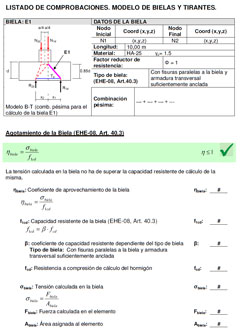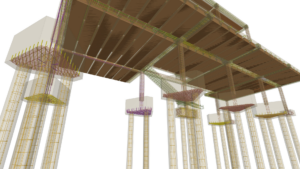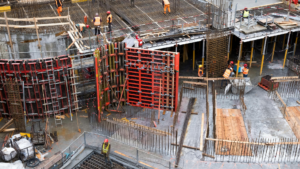The Spanish company of Architecture, Engineering and Construction software CYPE will develop a software that will allow the calculation and analysis of the D-Regions (Disturbed or Discontinuity) in reinforced concrete in order to guarantee the fulfillment of structural security fixed by the code in force. The D-Regions are structures or parts of a structure in which the general bending theory (hypothesis by Bernoulli-Navier or Kirchhoff) forces the designers to calculate these elements with simplifying "hypotheses" due to the inexistence of a tool which is able to analyze them. Among the D-Regions are rigid footings and pile caps, short corbels, deep beams or areas of application of concentrated loads.
This project, which will be based on the strut-and-tie method, will have an international character since, other than the EHE-08 Spanish Code, it will be adapted to different international norms, among them the Eurocodes, given the strong internationalization that CYPE has developed around the world. Also, this initiative from the company counts with the support from the Center for Industrial and Technological Development (CDTI), dependant on the Department of Science and Innovation, for their bet on I+D+i in the construction sector.

In Spain, for example, the actual concrete instruction EHE-08 determines prototypes for concrete cases, establishing the security verifications that must take place in these elements. "The circumstances which occur in the real projects can't always be adjusted to these type of cases, forcing the designer to intervene manually", according to the explanation given by CYPE.
In fact, the actual informatics programs are limited to giving back a calculation result based on the criteria established by the designer, making him the one to verify the fulfillment of the code. "With this new informatics tool, a systematization and optimization of the professional work will be achieved, along with the incorporation of a 3D-view improving results", claims the company.
To carry out this calculation, the makers from CYPE will be based on a model of infinite elements that will reproduce, in a sufficiently approximate way, the concrete's structural behavior, retrieving the distribution of the main stresses in the element, with which, by means of volume regionalization, sections to integrate the stresses in order to acquire the internal compression and tension forces to get the strut-and-tie model will be obtained. Also, it will subsequently analyze the meeting nodes between the struts and the struts with ties that will be generated in the models.



